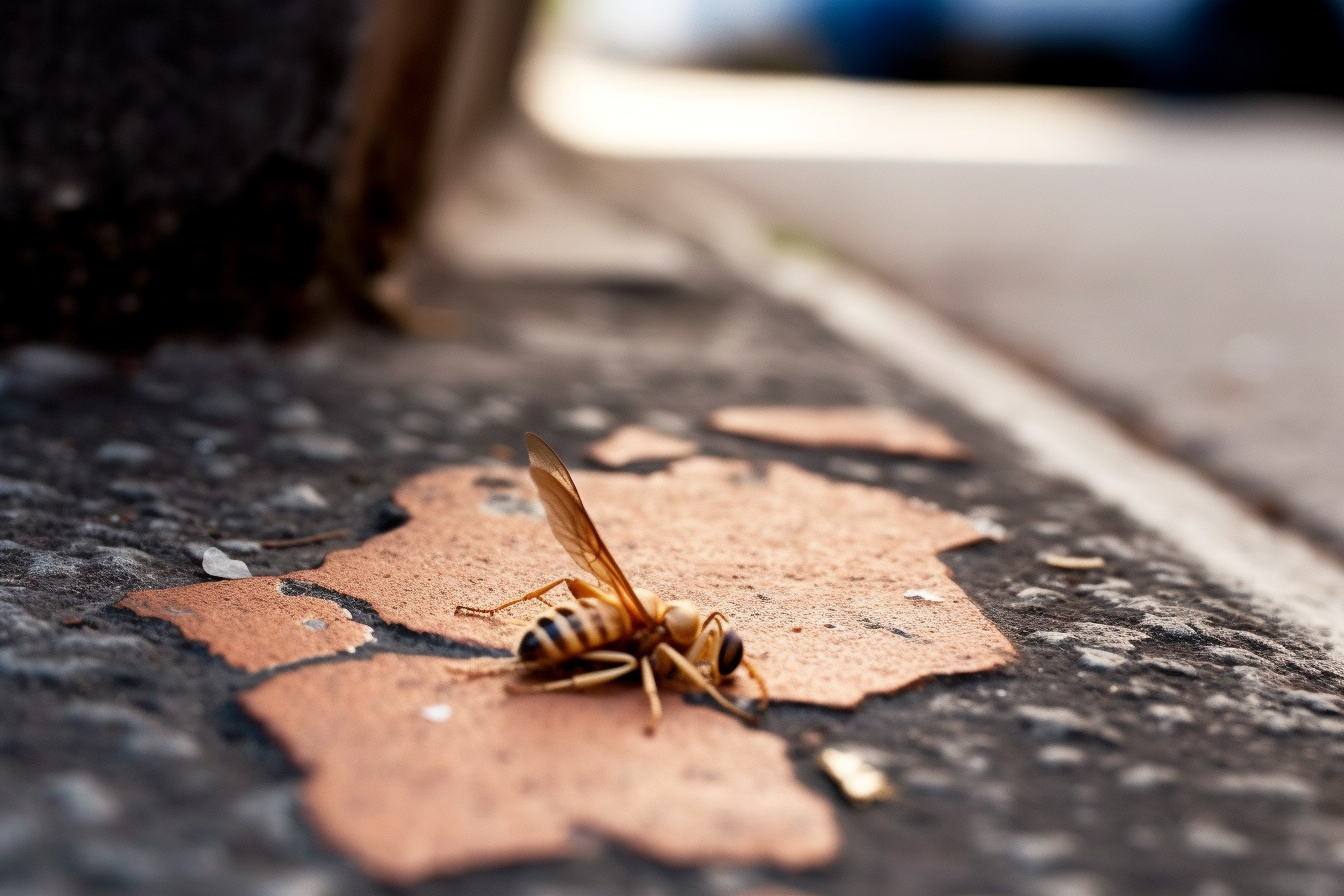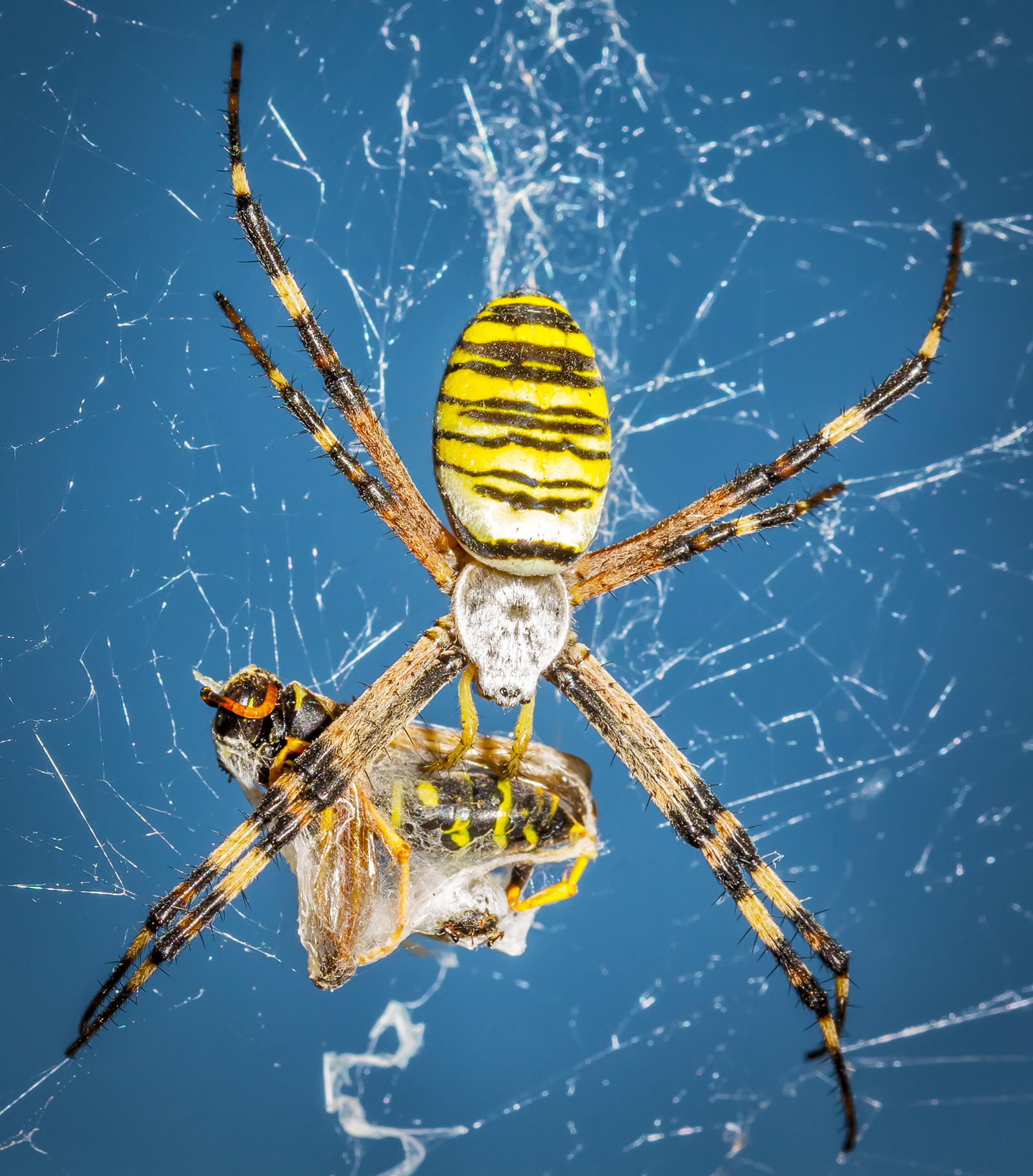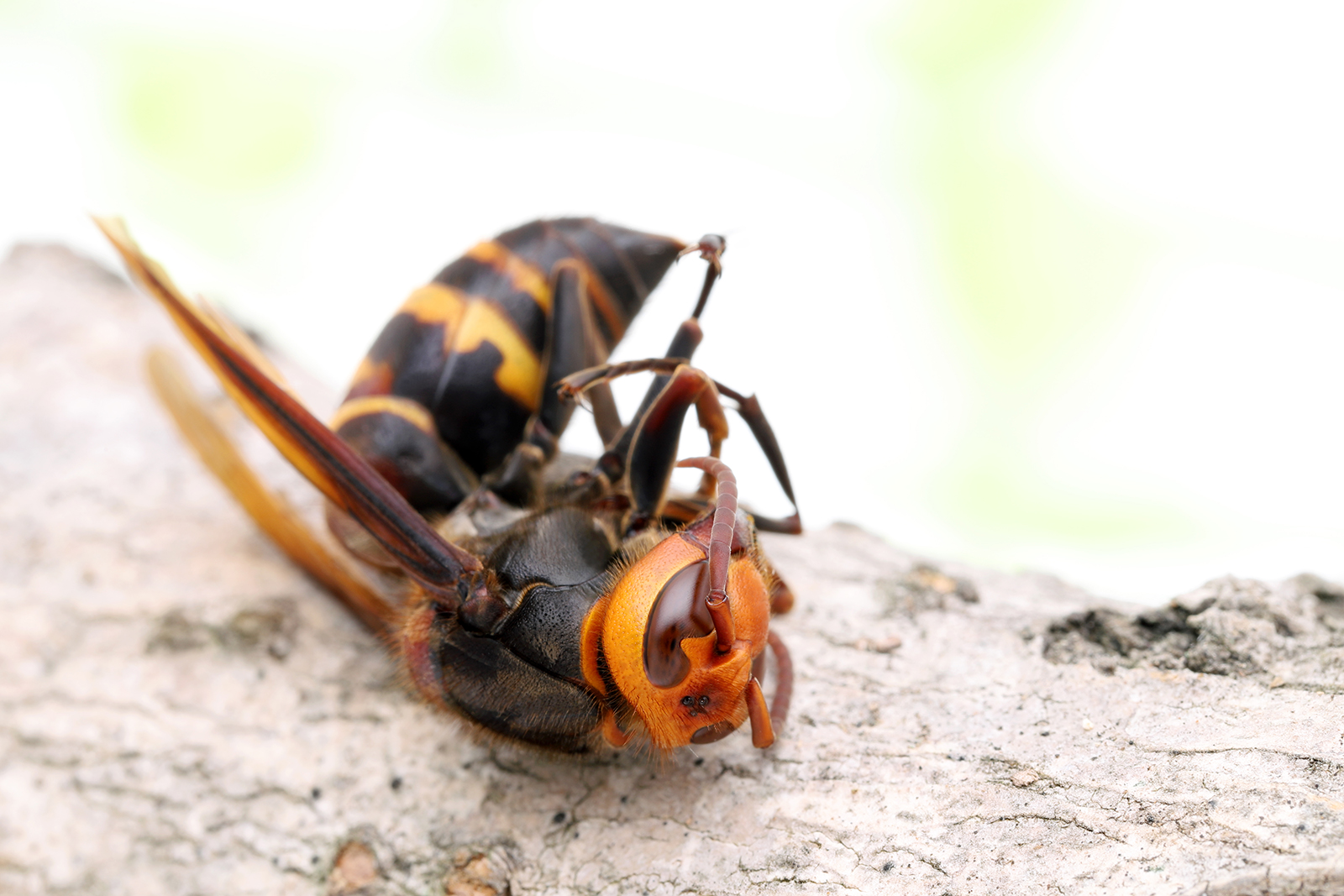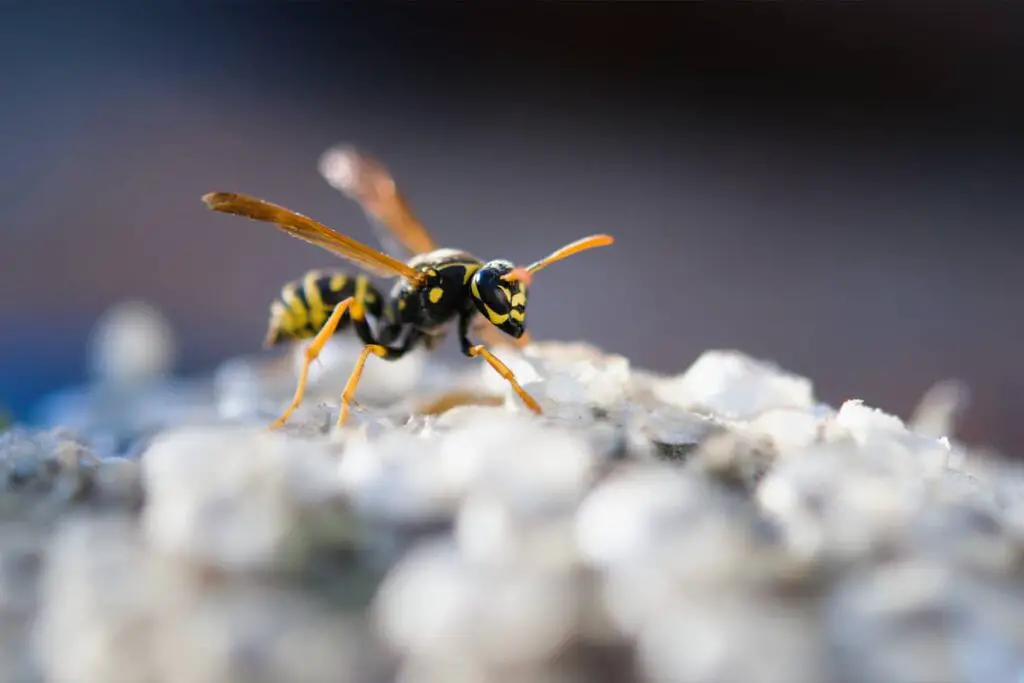
Have you ever noticed a wasp seemingly trying to sting itself when it’s dying? This might look odd, and it’s natural to wonder whether these insects are actually attempting to harm themselves in their final moments, or is there more to it?
The sting reflex is the last one to fade when a wasp or other insects who sting die, so the wasp isn’t actually trying to sting itself, but merely exhibiting a last-ditch defensive action. If a wasp is dying or in distress, it may exhibit erratic behavior or become more defensive, which could potentially result in stinging, but this is not a deliberate act of self-harm.
Unlike bees, wasps do not die after they sting, as they have smaller barbs on their stingers that do not stick in their target . When a wasp stings, it injects venom into the skin, and the pain and swelling humans experience are actually caused by our own body’s defenses, not the venom itself.
I love learning about insects like wasps, and I hope this brief introduction has provided you with some valuable insights into their behavior, especially the fascinating reflexes behind their sting mechanism.
For those who’d like to know more, let’s break it down in more detail.
Do Wasps Sting Themselves When Dying
Wasps do not deliberately sting themselves when under extreme duress, but it may appear so because their sting reflex will continue to fire even as the rest of the wasp stops functioning. Wasps are tough little insects, and will fight to the very end.
In contrast to bees, which can only sting once because their stingers have large barbs that get stuck in their target, wasps have smaller barbs that do not get lodged. This enables them to sting multiple times without dying (Family Handyman).
When a wasp stings, it injects venom into its victim, causing pain and irritation. This venom is responsible for the discomfort we experience after being stung (Healthline). If you are stung by a wasp, it is important to clean the affected area with soap and water and apply ice to minimize swelling and pain.
In some cases, people may have severe allergic reactions to wasp venom, requiring emergency medical care. However, most wasp stings can be treated at home (Very Well Health).
Wasp Anatomy and Sting Mechanism
When discussing wasp anatomy, it is essential to understand the structure and functionality of their stingers. I’d like provide some more information on stinger structure, venom production, and their role in wasp behavior.
Stinger Structure
Wasps have a unique stinger structure that sets them apart from other insects like bees. While bees have larger barbs on their stingers, which cause the stinger to tear from the body after use, wasps possess multiple smaller barbs. This feature allows them to sting multiple times without losing the stinger or causing damage to themselves.
Venom Production
Wasps produce venom within their bodies, which is delivered through the stinger during an attack. This venom plays an essential role in the way wasps immobilize prey or defend themselves against perceived threats. Unlike bees, wasps can sting more than once because their stinger remains intact after an attack, giving them far greater attack potential. This predatory behavior is explained in more detail on Home and Garden Digest.
The venom produced by wasps varies in composition but typically consists of a cocktail of proteins, enzymes, and other molecules. These components work together to cause pain, inflammation, and sometimes allergic reactions in the stung creature.
In summary, wasp anatomy is primarily focused on their stinger structure and venom production, allowing them to be efficient predators and defenders. Their stingers, equipped with multiple small barbs, enable them to sting repeatedly without losing the stinger, and their venom immobilizes prey or fends off threats effectively. This intricate structure and the versatile nature of their stinger make wasps both fascinating and, at times, dangerous insects.
Common Causes of Wasp Death
In my research on wasps I’ve discovered several factors that contribute to their death outside of human intervention. Understanding these factors can help in managing wasp populations around your home or garden.
Natural Predators
Wasps have several natural predators that help keep their populations in check. Some common predators include:
- Birds: Various species of birds, such as magpies and starlings, feed on adult wasps and their larvae.
- Insects: Other insects, like praying mantises, hoverflies, and dragonflies, prey on both adult wasps and their larvae.
- Spiders: Many spiders, such as orb-weavers and crab spiders, capture wasps in their webs or ambush them while hunting.
These predators play a significant role in maintaining a balance between wasp populations and the ecosystems they inhabit.

Environmental Factors
Environmental factors can also contribute to wasp deaths. Some of these factors include:
- Temperature fluctuations: Wasps are sensitive to temperature changes, and extreme hot or cold conditions can lead to their death.
- Humidity: High humidity levels can cause wasps to become disoriented and lethargic, making them more susceptible to predation and other threats.
- Weather-related events: Storms, heavy rainfall, and other severe weather events can directly or indirectly lead to the death of wasps, either by drowning or destroying their nests.
It’s important to keep in mind that these environmental factors don’t always cause immediate death, but can contribute to a decline in overall wasp population health.
Disease and Parasites
Just like other animals, wasps can be affected by diseases and parasites. Here are a few examples:
- Viral and bacterial infections: Wasps, especially when living in large colonies, can be susceptible to infections that spread rapidly and lead to a significant loss of life within the colony.
- Parasitic wasps: Some species of parasitic wasps lay their eggs inside the bodies of other wasps, eventually killing the host when the larvae emerge.
- Mites and fungi: These small parasites can infect wasps and their nests, causing a range of health problems and potentially leading to death.
Fighting off these diseases and parasites can be difficult or even impossible for some wasp colonies, often resulting in the death of a significant portion of the population or the entire colony.
Effect of a Wasp’s Sting on Other Wasps
In my exploration of the interaction between wasps and their stinging behavior, I delved into how their stings affect other wasps. I came across some interesting findings about this for both social and solitary wasps.
Social Wasps
As I learned, social wasps, like paper wasps or hornets, live in large colonies, and their stinging behavior is primarily focused on defending their nests. When a social wasp perceives a threat, it can release a pheromone that alerts other wasps in the colony. This pheromone acts as an alarm, summoning additional wasps to provide backup.
I couldn’t find any evidence indicating that wasps intentionally sting each other within the colony, as this would be counterproductive to the survival of their group. In the rare event of a wasp accidentally stinging another wasp, the effect would likely be similar to the effect on other creatures.
Solitary Wasps
In contrast to social wasps, solitary wasps lead a more independent lifestyle. They do not live in colonies and are generally less aggressive. These wasps primarily use their stings to paralyze their prey, such as spiders or caterpillars, for later consumption.
Given their solitary nature, the likelihood of solitary wasps stinging each other is minimal. However, if a solitary wasp were to sting another solitary wasp, the outcome would likely be similar to a social wasp: pain and potential paralysis. The stinging wasp might have mistaken the other wasp for prey or felt threatened and defended itself.
In summary, while it is uncommon for wasps to intentionally sting each other, the effects of a wasp’s sting on other wasps are akin to those experienced by other animals.
Human Intervention in Wasp Control
As a homeowner, I have been confronted with the challenge of controlling wasps around my property. Over the years, I have implemented various methods to minimize the risk of wasp stings and the damage they can cause. In my experience, I have found that a combination of chemical insecticides, physical barriers, and natural wasp deterrents the most effective methods in controlling wasps.
Chemical Insecticides
In situations where I had a significant wasp infestation, I have used chemical insecticides to eliminate the colony. There are many commercial products available, and I usually choose one that is specifically designed for wasps. When using chemical insecticides, I make sure to follow the product instructions and take precautions to protect myself and the environment. I apply the insecticide directly to the wasp nest during the early morning or late evening when they are less active.
If the idea of going to war against a wasp colony concerns you (as it rightly should) I recommend calling in a professional exterminator. Sometimes it’s not worth the risk.
Physical Barriers
Physical barriers have also been effective for me in controlling wasps around my property. For instance, I have installed screens and mesh covers on windows, doors, and vents to prevent wasps from entering my home. Additionally, I have sealed cracks and crevices where wasps might build their nests. Fixing leaks and eliminating standing water has also discouraged wasps from nesting near my home.
Natural Wasp Deterrents
I have also explored natural wasp deterrents as a more environmentally friendly option. One strategy I have used successfully is planting a variety of herbs and plants that wasps seem to avoid, such as lemongrass, eucalyptus, and mint. I have also utilized essential oils like peppermint and lavender to repel wasps. Another technique is creating a simple DIY wasp trap, made from a plastic bottle and a sweet liquid attractant, which captures and drowns wasps that are foraging near my home.
By employing a combination of these methods, I have been able to mitigate the risks associated with wasps and maintain a safer living environment for myself and my family.
Conclusion
Wasps don’t actually sting themselves when they’re dying, even though it might look that way. The sting reflex is the last one to fade as these insects die, leading to what appears to be a self-inflicted sting. This reflex is merely a last-ditch defensive action, not a deliberate attempt to harm themselves.
It’s important to note that unlike bees, wasps can sting multiple times without dying. Their smooth stingers allow them to easily pierce and withdraw from their target without getting stuck or damaging themselves in the process.
So, if you see a dying wasp seemingly stinging itself, rest assured that it’s not actually inflicting harm upon itself. Rather, it’s just an involuntary reflex as the wasp succumbs to its eventual fate.

Driven by a passion for those tiny creatures that rule our world, we at Bug Domain strive to be your go-to resource for information on insects.




